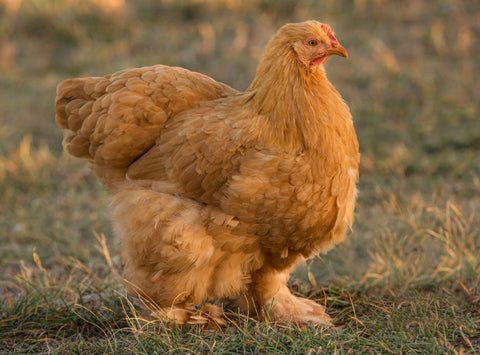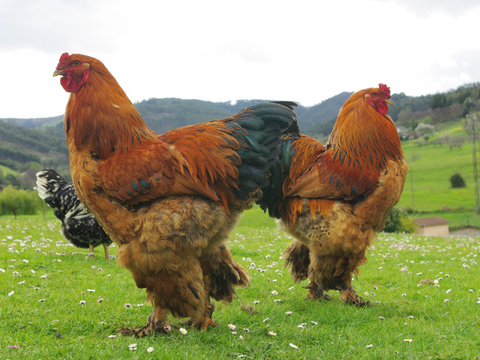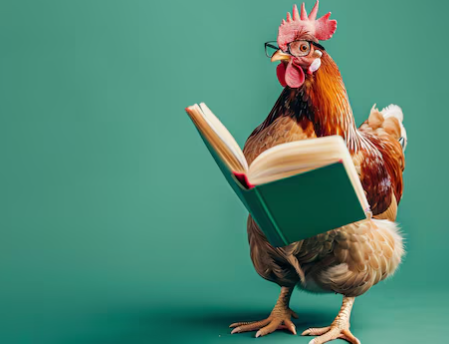🐓 The A–Z of Chicken Breeds: Cochin
If chickens had a “royal family,” the Cochin would definitely be in it. 👑 Big, fluffy, and feathered from head to toe (literally, even their feet!), these gentle giants are the teddy bears of the chicken world.
Once prized for their size and utility, Cochins are now mostly kept for their beauty, broodiness, and their charming, docile personalities. Let’s take a closer look at this majestic breed!
🥚 Quick Cochin Facts
-
Uses: Once valued for eggs & meat, now mainly show birds & backyard beauties
-
Eggs: 150–200 small, tinted eggs per year
-
Origin: China (via Shanghai, with a fascinating twist!)
-
Weight:
-
Cock: 4.5–5.1kg
-
Hen: 4.1–5kg
-
-
Colours: Black, Blue, Buff, Cuckoo, Partridge & Grouse, White
-
Temperament: Docile, friendly, and great with families
-
Fun Fact: No true Cochin bantams exist in the UK—they’re actually classified as Pekin Bantams!
📜 A Little History
The Cochin story has a bit of drama!
In 1843, giant feather-footed birds arrived in the UK from Cochin-China (modern-day Vietnam). Poultry keepers loved them, but those birds weren’t the Cochins we know today—they just left behind their name.
Fast forward to 1847, when Shanghai feather-legged birds came onto the scene. People lumped them together with the earlier imports, called them “Cochins,” and the name stuck. Meanwhile, bantam-sized versions from Peking got rebranded as Pekin Bantams after much heated debate. (Chicken people are serious about names!) 🐓📖
💡 Good to Know About Cochins
-
They’re giant fluffballs but surprisingly lay small eggs.
-
They make excellent broodies, so don’t be surprised if they decide to sit tight on a nest.
-
Their feathered feet are gorgeous but a little high-maintenance—mud is their enemy! Keep runs covered and clean, especially in wet weather.
-
They’re slow to mature compared to some breeds, but their sweet nature makes them worth the wait.
🎨 Breeding & Colour Hints
-
Partridge Cochins: Need double mating (separate cock and pullet lines) to get show-worthy colour patterns.
-
White Cochins: Easier to breed, but watch out! Too much sun can turn them brassy, so a bit of shade keeps them looking their best.
-
Moulting Tip: Skip maize and grass during moult—these can add unwanted pigment and turn white feathers creamy.
🌟 Why Keep Cochins?
Cochins aren’t about maximum egg production—they’re about presence. They waddle around like feathered marshmallows, bring calm to the flock, and are great conversation starters. Whether you’re after a show bird, a broody mama, or just a big, cuddly addition to your coop, Cochins will steal your heart. ❤️




